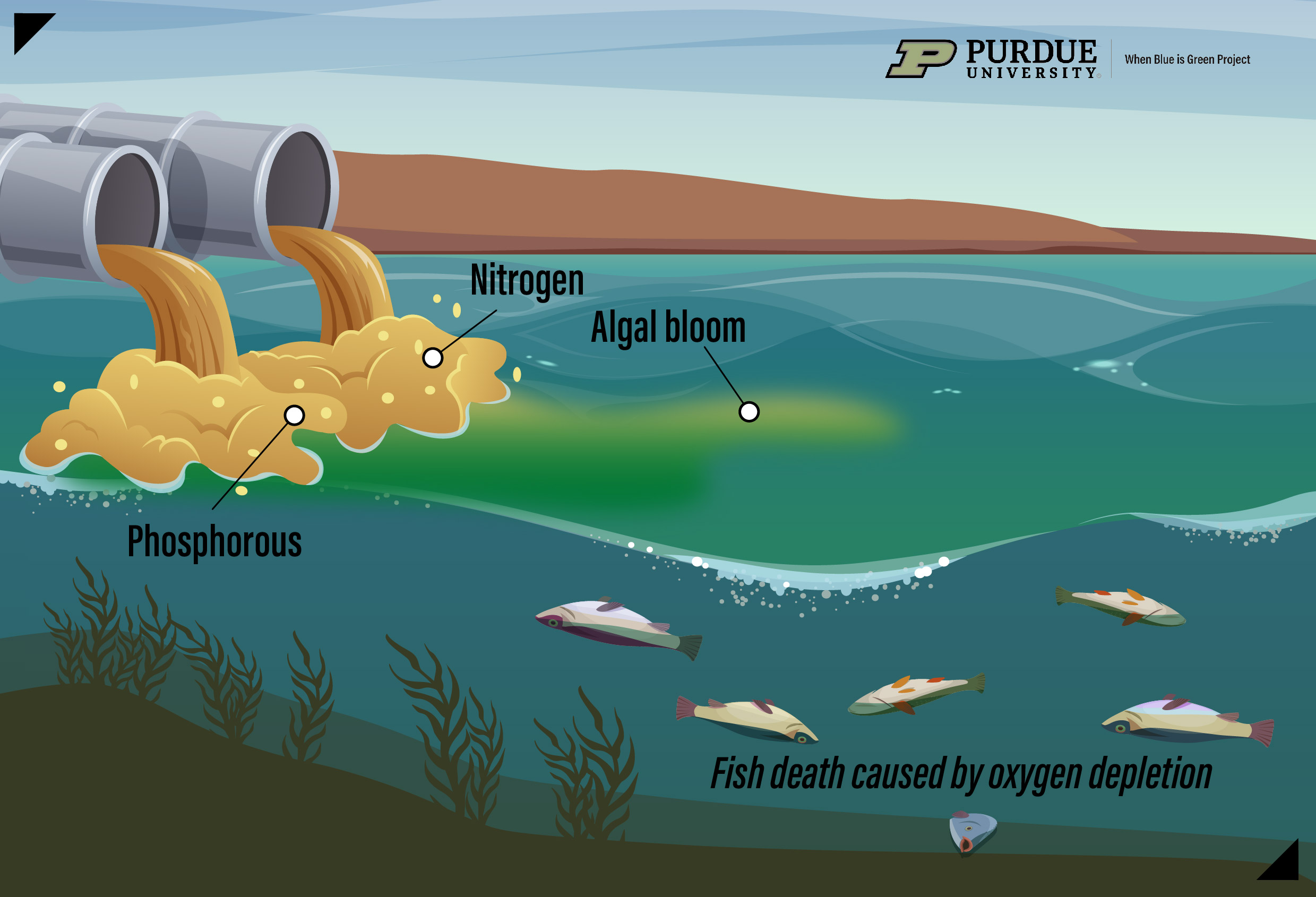Eutrophication
What is Eutrophication?

Excess nutrients and what to do with them
Eutrophication is the process by which bodies of water become overly enriched with nutrients, usually referring to nitrogen and phosphorus. The excess nutrients, often stemming from agricultural wastewater discharge and runoff pollution, stimulate the growth of dense algal blooms that block sunlight from reaching underwater plants. When the algae die off, bacteria decompose them, consuming large amounts of dissolved oxygen in the water. This depletion of oxygen creates environments with oxygen levels too low to support most aquatic life. These "dead zones" reduce biodiversity and ultimately disrupt ecosystems.
As previously mentioned, wastewater discharge is a source of eutrophication. In aquaponics systems, up to 20% of nutrient-rich wastewater—composed of ammonia, nitrites, nitrates, phosphates, and organic carbon—must be discharged daily to maintain water quality for organism survival. This requirement creates high maintenance costs for large-scale farms, which must ensure that discharged wastewater meets standards set by EPA-regulated discharge permits. Small farms are not required to have discharge permits, leading to potentially unchecked, continuous pollution. The BiG project has recognized that reforming current aquaponics systems is needed not only to reduce environmental waste but also to improve producers' financial stability.
How is the BiG project helping offset eutrophication? Our end goal remains to supply blue foods through an environmentally and economically sustainable system. By implementing a multi-stage treatment process using algal photobioreactors, anaerobic digesters, and biofiltration, we can further purify wastewater, completely cut out nutrient discharge, and increase overall nutrient efficiency. Visit our interactive graphics to learn more about each process!
